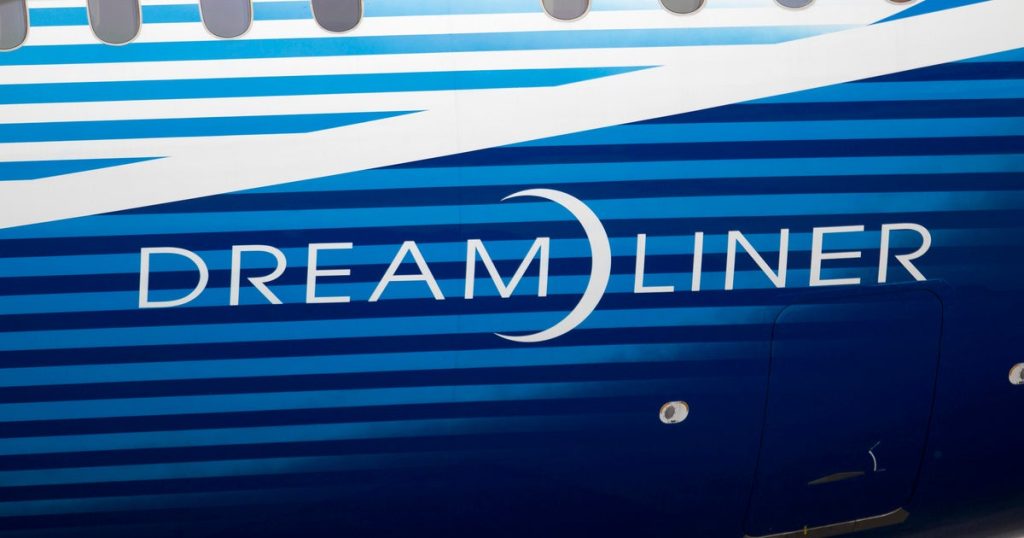A tragic incident involving an Air India aircraft has drawn attention to Boeing’s 787-8 Dreamliner model, which crashed in Ahmedabad, India, on Thursday. This accident involved 242 passengers and crew members, raising significant concerns about safety protocols surrounding the aircraft. While investigations into the cause of the crash are ongoing, the incident marks a somber moment for Boeing, known for its robust safety record with the Dreamliner.
| Article Subheadings |
|---|
| 1) Initial Details of the Crash |
| 2) Investigations Underway |
| 3) History of the 787-8 Dreamliner |
| 4) Broader Safety Concerns at Boeing |
| 5) Reactions and Implications |
Initial Details of the Crash
On Thursday, an Air India flight operated by a Boeing 787-8 Dreamliner crashed shortly after taking off from Ahmedabad, aiming for London’s Gatwick Airport. The incident reportedly resulted in no known survivors among the 242 passengers and crew on board, with officials also expressing fears of damage on the ground due to the aircraft’s trajectory. This marks a significant moment in aviation history as it represents the first crash of a model that has been in service since 2011.
Investigations Underway
Following the accident, U.S. safety officials confirmed they are sending a team to India to assist in the investigation led by the Aircraft Accident Investigation Bureau. The National Transportation Safety Board (NTSB) stated in an official announcement, “The NTSB will be leading a team of U.S. investigators travelling to India…”. Meanwhile, the Federal Aviation Administration (FAA) underscores that local governments lead investigations of aviation accidents in their areas, and they are prepared to provide technical support as requested.
History of the 787-8 Dreamliner
The aircraft involved in this tragic incident was delivered to Air India in January 2014, logging over 41,000 flight hours with approximately 8,000 takeoffs and landings. The 787-8 Dreamliner has generally been praised for handling longer non-stop routes, significantly expanding global connectivity. However, this model has faced scrutiny in past investigations concerning manufacturing and assembly practices. Earlier incidents involving cockpit seat inspections prompted a re-evaluation of safety measures, highlighting the aircraft’s design and assembly processes.
Broader Safety Concerns at Boeing
This incident has reignited concerns regarding the safety protocols at Boeing, particularly given the company’s troubled history with its 737 Max jets, which were involved in two fatal crashes, resulting in 346 fatalities. Just last year, Boeing reached a $1.1 billion settlement with the Department of Justice to avoid prosecution stemming from these accidents. Reports about assembly defects, which surfaced following whistleblower claims, also add to a growing list of issues regarding Boeing’s manufacturing processes. Investigations into these concerns remain ongoing, although it is yet unclear if they relate to the recent crash.
Reactions and Implications
Reactions to the crash have been swift, with Boeing experiencing a notable drop in stock value, falling 4.8% to $203.59 shortly after the news broke. Boeing has expressed its condolences, stating they remain in contact with Air India and are prepared to provide support to all affected by the tragedy. Investigators will closely examine both the flight’s operational history and the aircraft’s technical features in efforts to determine the cause and prevent future incidents.
| No. | Key Points |
|---|---|
| 1 | The Air India Boeing 787-8 Dreamliner crashed in Ahmedabad, India, with no survivors reported among the 242 passengers and crew. |
| 2 | U.S. safety officials are participating in the investigation led by the NTSB and local authorities. |
| 3 | The 787-8 Dreamliner has been in service since 2011 and is noted for its long-distance flight capabilities. |
| 4 | Boeing faces ongoing scrutiny over safety practices, especially after previous crises involving other models like the 737 Max. |
| 5 | Boeing’s stock has dipped in response to the crash and subsequent investigations are expected to impact the company’s operations significantly. |
Summary
The Air India crash of a Boeing 787-8 Dreamliner has raised serious concerns about aviation safety, particularly given the aircraft’s prominence within the industry. The ongoing investigation, supported by U.S. safety officials, will likely influence future operational protocols and regulatory measures for Boeing and the aviation sector as a whole. The tragedy underscores the need for stringent adherence to safety standards and excellence in manufacturing practices in order to maintain public faith in air travel.
Frequently Asked Questions
Question: What is the 787-8 Dreamliner?
The 787-8 Dreamliner is a widebody commercial aircraft developed by Boeing, recognized for its fuel efficiency and advanced technology, enabling long-distance travel.
Question: How is the investigation into the crash conducted?
The investigation is led by local authorities in India, with support from U.S. agencies like the NTSB and FAA to ensure a comprehensive examination of all potential causes of the accident.
Question: What were the previous safety concerns regarding Boeing aircraft?
Boeing has faced criticisms related to safety following high-profile accidents involving the 737 Max series, leading to investigations and settlements, including a $1.1 billion agreement with the Department of Justice.


